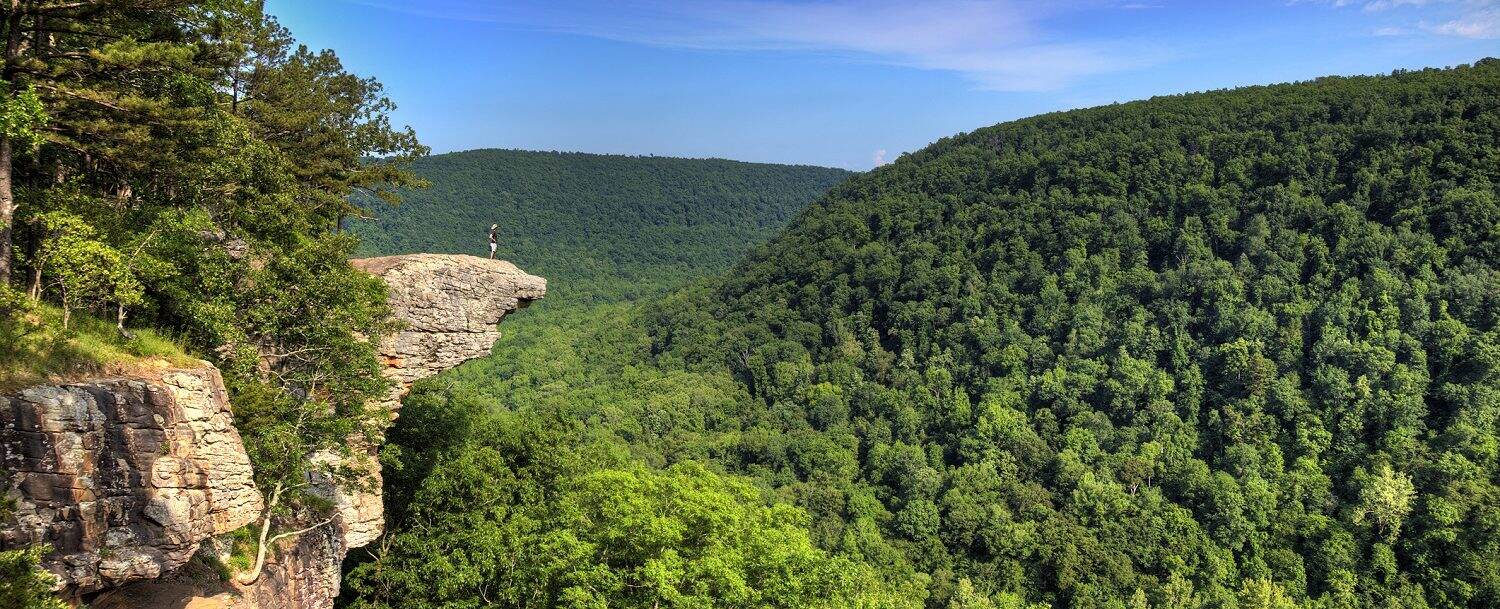
The Ozark Mountains, with their rugged beauty and rich cultural heritage, hold a special place in the heart of the United States. This ancient range, stretching across four states, is a treasure trove of natural wonders, outdoor adventures, and historical significance. From its stunning landscapes to its vibrant local communities, the Ozarks offer a tapestry of experiences for visitors and residents alike. In this article, we'll delve into 18 fascinating facts about the Ozark Mountains, shedding light on their captivating allure and deep-rooted influence. So, fasten your seatbelts and get ready to embark on a journey through the heart of the Ozarks, where enchanting tales and breathtaking vistas await.
Key Takeaways:
- The Ozark Mountains are not really mountains, but a beautiful region with diverse wildlife, folk music, and outdoor activities like hiking and cave exploration.
- The Ozarks cover a huge area across four states, offering stunning fall foliage, scenic drives, and a peaceful retreat from city life amidst its timeless natural beauty.
The Ozark Mountains are not mountains.
Contrary to their name, the Ozarks are not technically mountains, but rather a highland region characterized by deeply dissected plateaus, gently rolling hills, and a multitude of karst formations.
The Ozarks cover a vast area.
Encompassing a sprawling 47,000 square miles across four states, the Ozark Mountains extend into Missouri, Arkansas, Oklahoma, and Kansas, making them a significant geographic feature of the central United States.
The highest peak in the Ozarks is Mount Magazine.
Rising to an impressive height of 2,753 feet, Mount Magazine stands as the highest point within the Ozark Mountains, offering breathtaking panoramic views of the surrounding landscape.
The region is a haven for outdoor enthusiasts.
With its abundant natural beauty, the Ozarks attract outdoor enthusiasts from far and wide, offering a plethora of activities such as hiking, rock climbing, fishing, and wildlife observation amidst its scenic terrain.
The Ozarks are home to a diverse ecosystem.
The region boasts a rich and diverse ecosystem, harboring a wide array of plant and animal species, including unique flora and fauna that are endemic to the Ozark Mountains.
The Ozark National Forest is a prominent landmark.
Encompassing over 1.2 million acres, the Ozark National Forest stands as a prominent landmark within the region, providing ample opportunities for outdoor recreation, including camping, hunting, and scenic drives.
The Ozarks have a rich cultural heritage.
The Ozark Mountains are steeped in a rich cultural heritage, with a history shaped by Native American tribes, early European settlers, and the enduring traditions of the Ozark people.
The region is renowned for its folk music traditions.
The Ozarks have long been celebrated for their vibrant folk music traditions, with a deep-rooted musical legacy that encompasses bluegrass, country, and traditional folk tunes.
The Ozarks are dotted with picturesque waterways.
A network of scenic rivers and streams meanders through the Ozark Mountains, offering opportunities for canoeing, kayaking, and floating along the tranquil waters that wind through the breathtaking landscapes.
The region is a hub for cave exploration.
The Ozarks are renowned for their extensive cave systems, presenting opportunities for spelunking and underground exploration, with notable caves such as Blanchard Springs Caverns captivating visitors with their stunning geological formations.
The Ozarks are a paradise for fall foliage.
During the autumn season, the Ozark Mountains transform into a kaleidoscope of vibrant colors, as the foliage adorns the landscape in a breathtaking display of reds, oranges, and golds.
The Ozarks are a treasure trove of geological wonders.
The region is replete with geological marvels, including natural bridges, sinkholes, and towering limestone bluffs that add to the scenic allure of the Ozark Mountains.
The Ozarks are a prime destination for scenic drives.
The winding roads and scenic byways of the Ozarks offer captivating vistas at every turn, making it a prime destination for leisurely drives and exploration.
The Ozarks are home to a variety of state parks.
A multitude of state parks dot the Ozark landscape, offering opportunities for camping, picnicking, and immersing oneself in the natural splendor of the region.
The Ozarks have a wealth of recreational lakes.
The Ozark Mountains are dotted with picturesque lakes, providing ample opportunities for boating, fishing, and water-based activities amidst the stunning backdrop of the region.
The Ozarks are a hotspot for outdoor festivals and events.
Throughout the year, the Ozark Mountains play host to a vibrant array of outdoor festivals, cultural events, and fairs that celebrate the region's heritage and natural beauty.
The Ozarks offer a tranquil retreat from urban life.
With its serene landscapes and unspoiled wilderness, the Ozark Mountains provide a tranquil retreat for those seeking to escape the hustle and bustle of urban life and immerse themselves in nature.
The Ozarks are a timeless symbol of natural beauty.
Endowed with a timeless and enchanting natural beauty, the Ozark Mountains stand as a cherished symbol of the unspoiled wilderness and captivating landscapes that define the heartland of America.
I hope this article provides a comprehensive overview of the Ozark Mountains, showcasing their natural splendor, cultural significance, and appeal as a haven for outdoor enthusiasts and nature lovers.
Conclusion
The Ozark Mountains are a captivating region that boasts a rich tapestry of natural beauty, cultural heritage, and recreational opportunities. From its stunning landscapes to its vibrant folk traditions, the Ozarks offer a wealth of experiences for visitors and residents alike. Whether you're drawn to outdoor adventures, historical exploration, or simply seeking a peaceful retreat, the Ozark Mountains have something special to offer. With its unique blend of scenic wonders and warm hospitality, the Ozarks continue to enchant and inspire all who have the pleasure of experiencing this remarkable region.
FAQs
What are some popular outdoor activities in the Ozark Mountains?
The Ozarks are a haven for outdoor enthusiasts, offering a wide range of activities such as hiking, fishing, canoeing, and rock climbing. Visitors can also enjoy scenic drives, wildlife watching, and camping in the region's picturesque surroundings.
Are there any distinctive cultural traditions in the Ozark Mountains?
Yes, the Ozarks are known for their rich folk traditions, including music, crafts, and storytelling. Visitors can immerse themselves in the region's unique cultural heritage by attending local festivals, exploring artisan shops, and experiencing traditional Ozark music performances.
After exploring Ozark Mountain facts, consider learning about Subiaco Abbey's extraordinary history and its role in the region's cultural landscape. Fayetteville, Arkansas, offers insights into prominent industries driving economic growth in this part of the Ozarks. Delving into these topics will provide a more comprehensive understanding of the area's diverse attractions and significance.
Was this page helpful?
Our commitment to delivering trustworthy and engaging content is at the heart of what we do. Each fact on our site is contributed by real users like you, bringing a wealth of diverse insights and information. To ensure the highest standards of accuracy and reliability, our dedicated editors meticulously review each submission. This process guarantees that the facts we share are not only fascinating but also credible. Trust in our commitment to quality and authenticity as you explore and learn with us.


